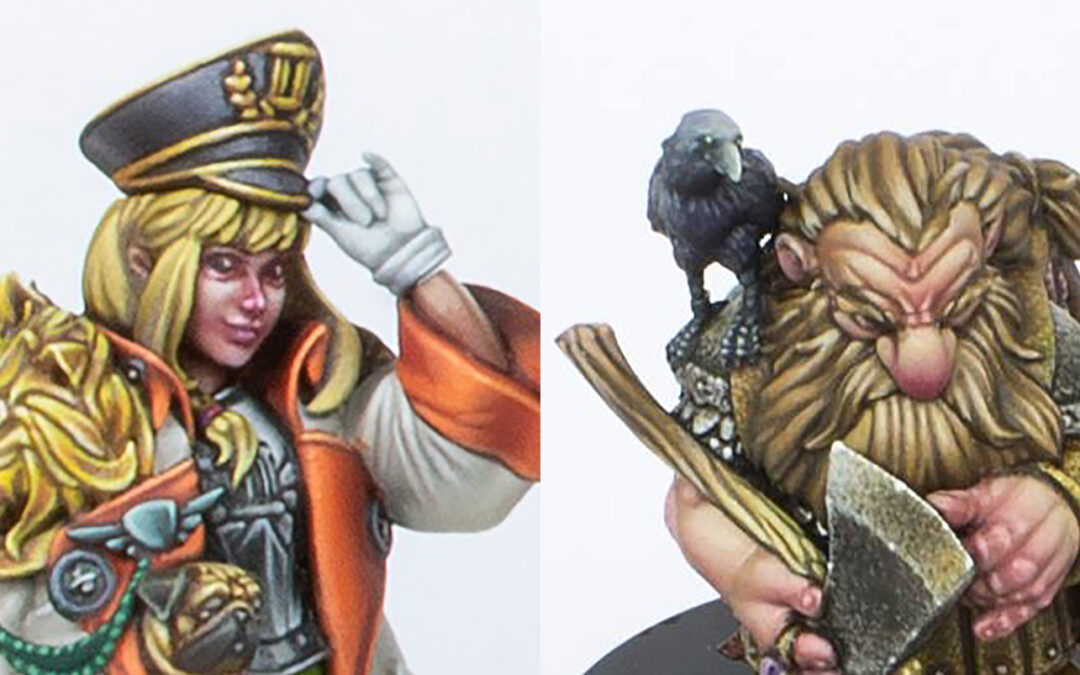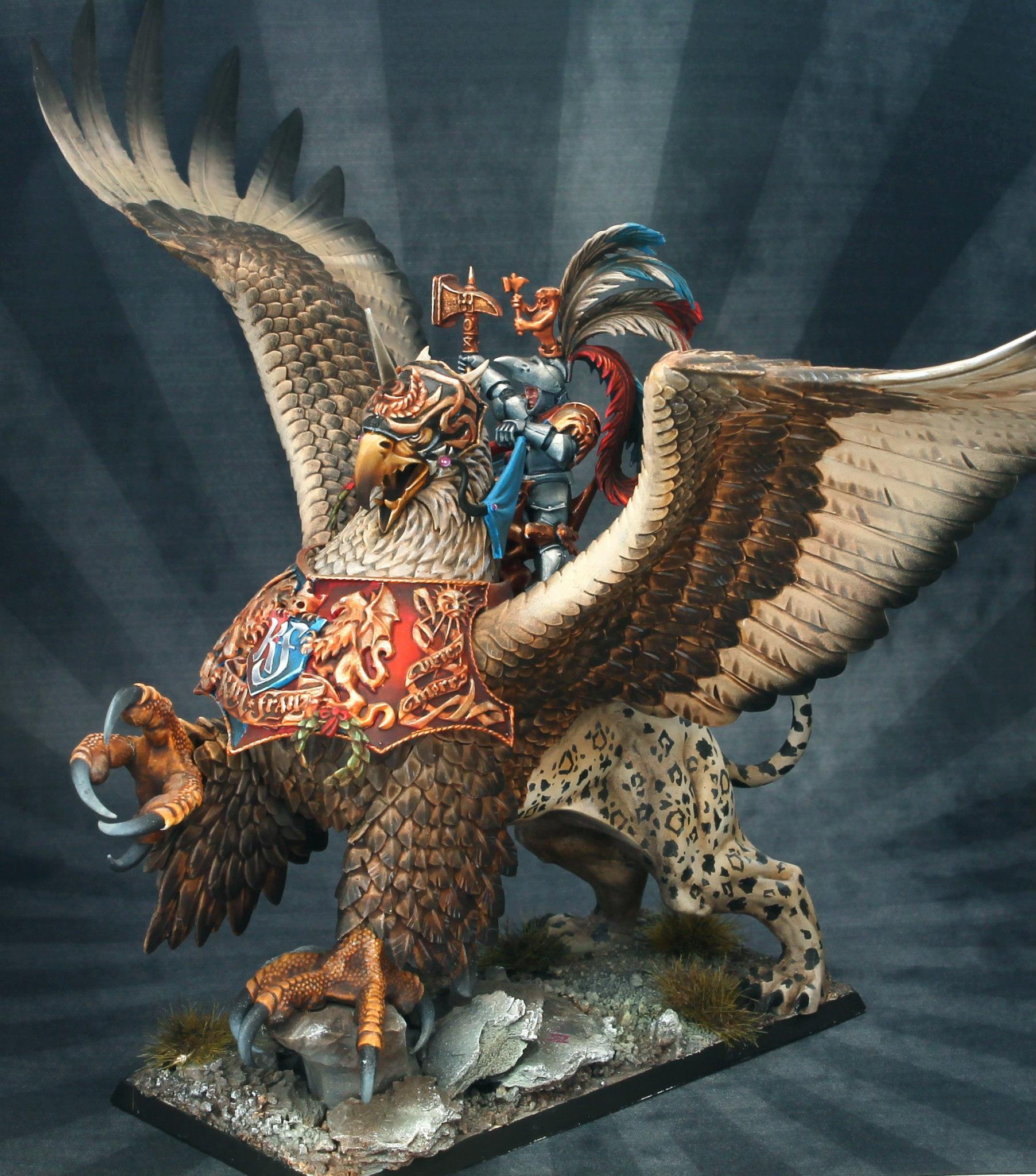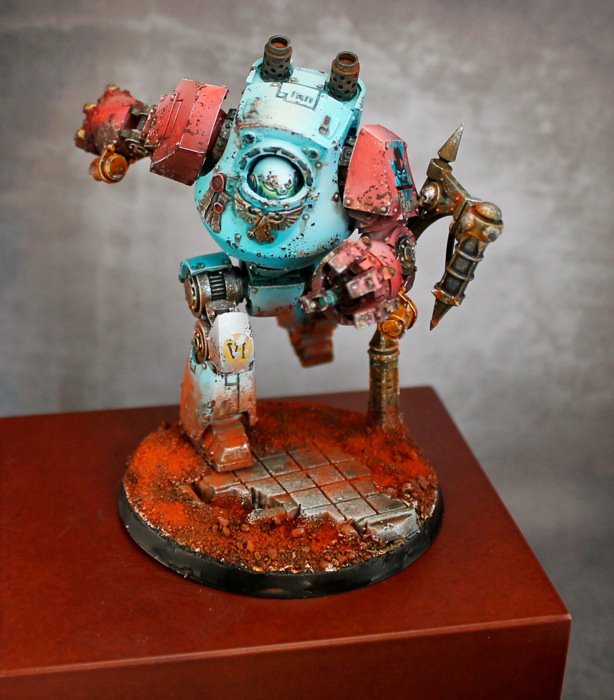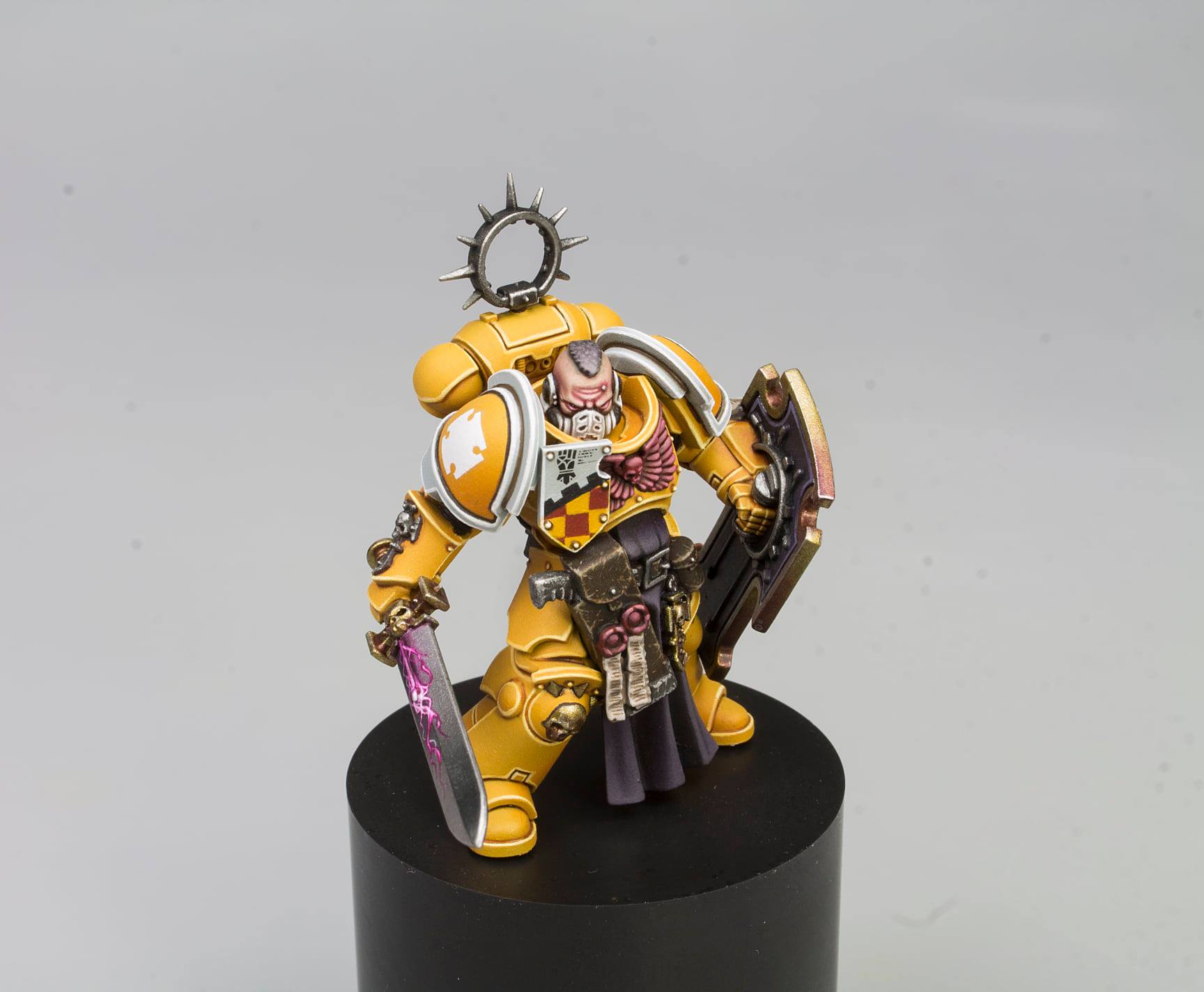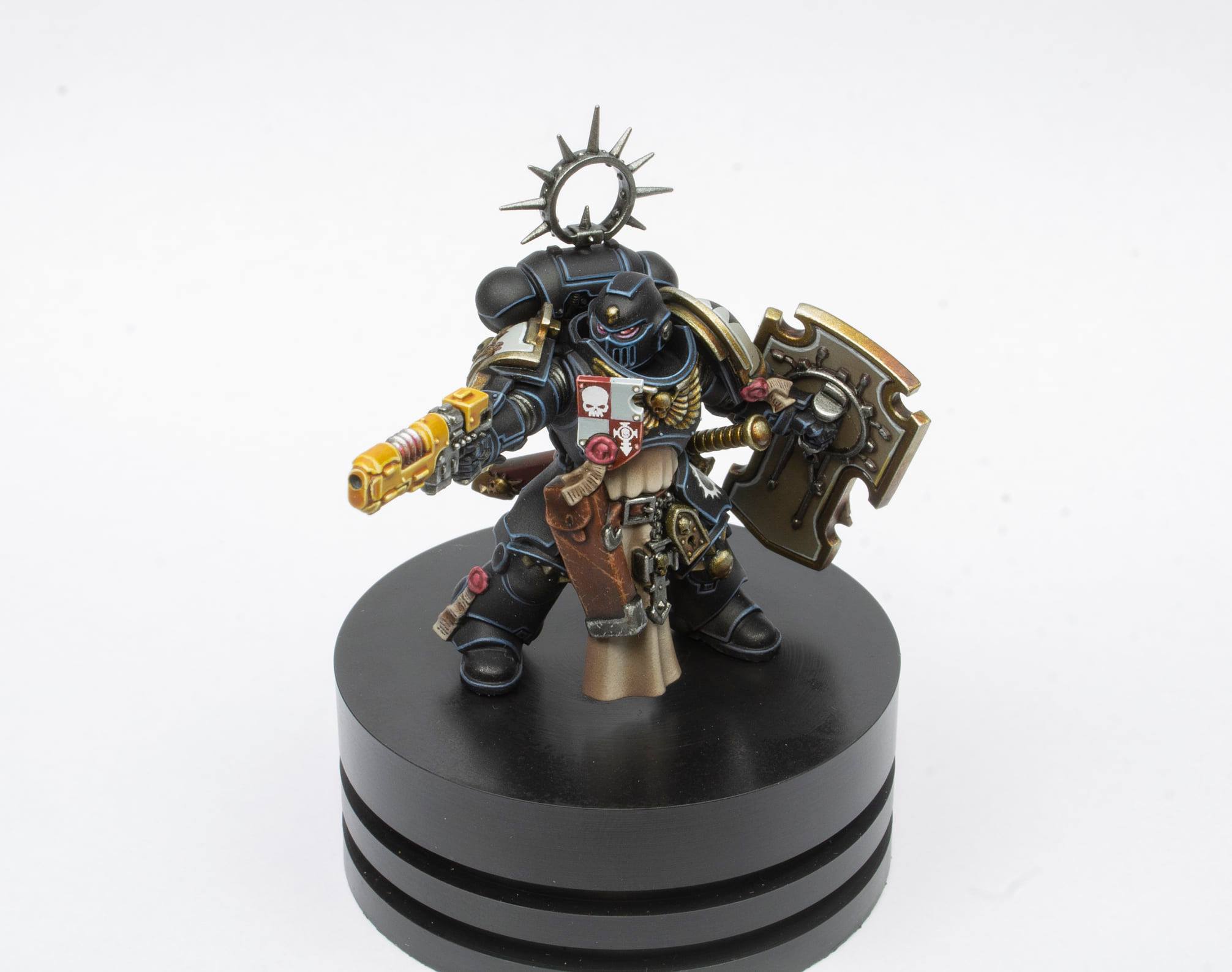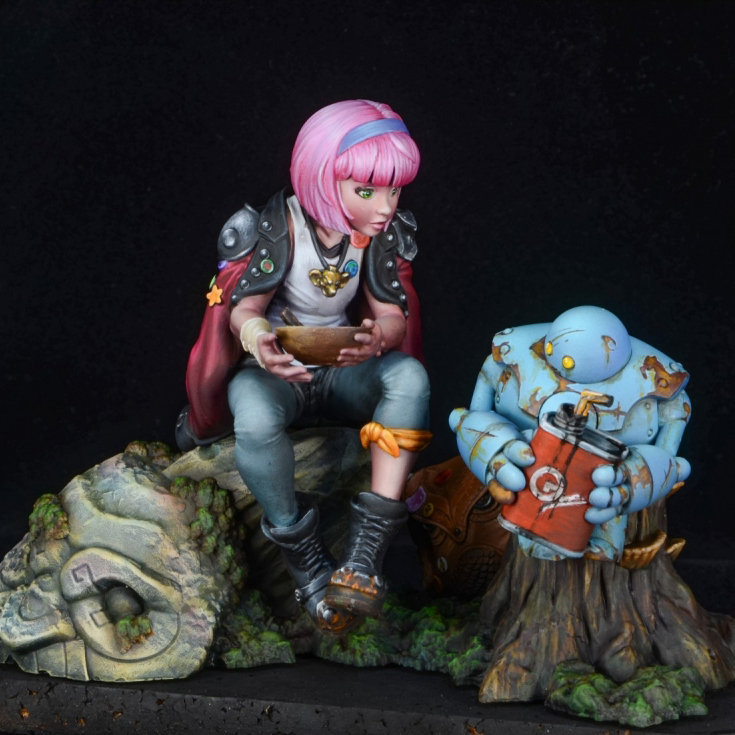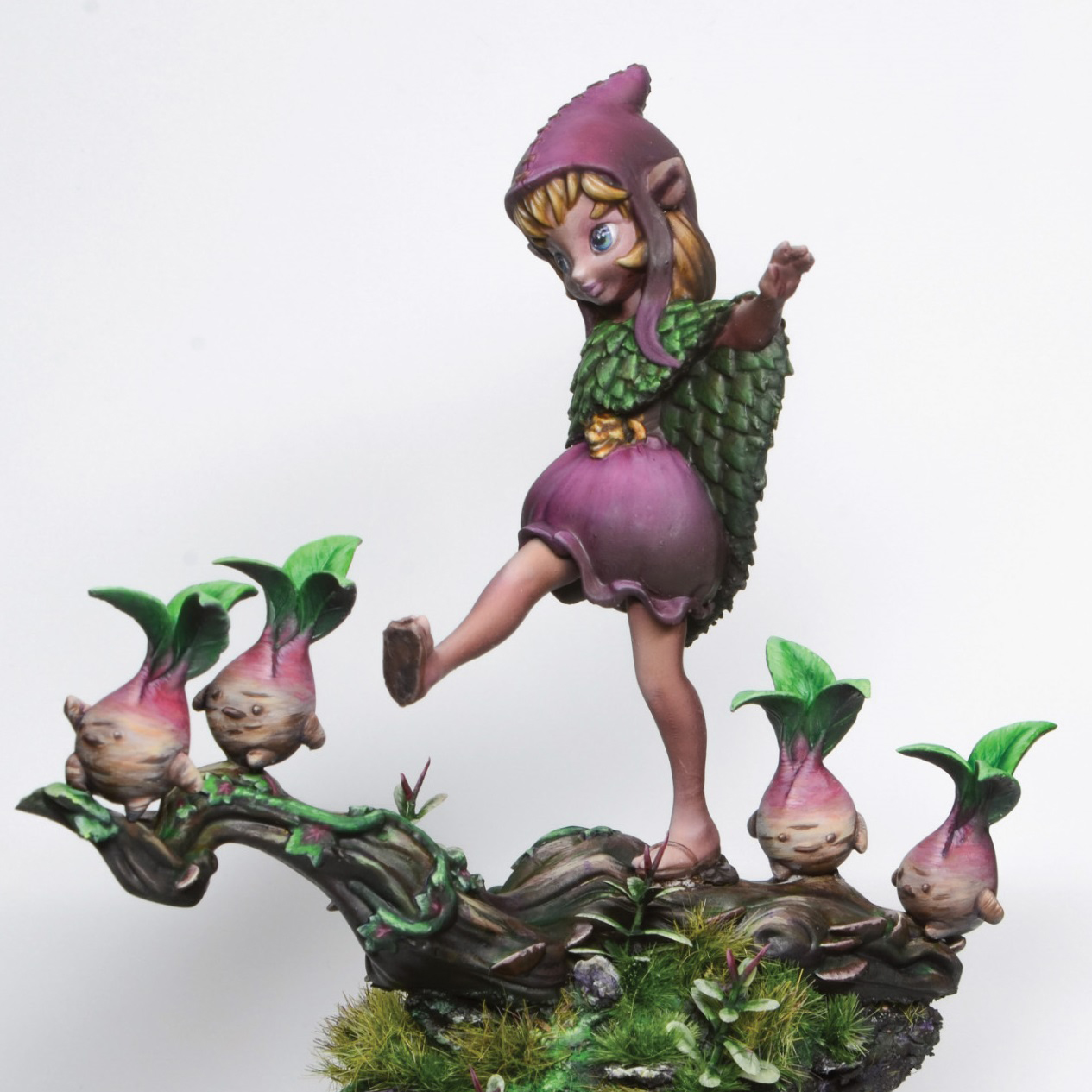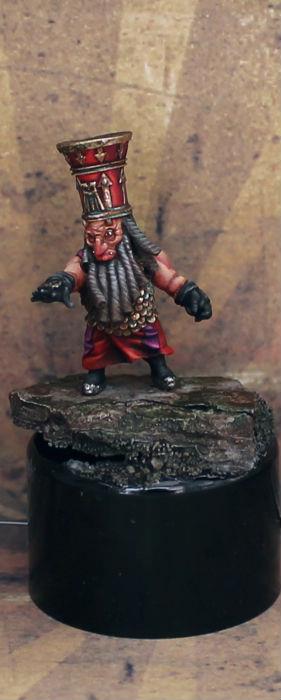Hi Friends,
it’s been almost two years since i posted on this blog. What can i say? Time flies more than i expected.
But now i want to share with you an interview with another painter who has been very important for my painting journey. To talk about how i met Matteo, i need to go quite a while back in time…
I remember first hearing about him when i started posting on the GW Tilea forum. Or should i say, i came to know him thanks to the wonderful pics of his painted miniatures that he was posting there.
GW Tilea was not exclusively about painted minis, though: it was a forum about everything that was GW, ranging from discussions about gaming, to the hobby, lore, etc.
What a great age it was for online forums: socials were not so popular as they are today, and there were so many passionate discussions on those boards – there were a lot of flames as well, i fondly remember some evergreens like “brush VS airbrush” or “Vallejo VS GW”.
That said, Matteo was quite active there and i was mesmerized by the quality of his paintjobs. At the time i was a really noob painter, struggling to evolve my style. I remember how one day i was in Turin and visited the GW store there, and discovered their cabinet was hosting many miniatures painted by Matteo (you can see a couple of them here on the right): i thought “they are amazing, so much better than what they look like in pictures!”.
And so, i decided to contact him and ask for some private lessons. Turin is just an hour from my town and i was excited to learn from a better painter. Much to my surprise, not only did he accept but he also offered to teach me for free.
Long story short, he proved to be very kind and helpful and after those 2-3 hours of lesson i finally understood concepts like zenithal light, volumetry, and much more. I can say it’s been an absolute epiphany to me.
Unfortunately, during the following years we had few chances to see each other and paint together but we kept in touch and i’m still very grateful for the teaching and suggestions he offered me. He’s been a constant inspiration to improve my precison, smoothness and use of vibrant colors.
Matteo now has built a family, and he runs a successful miniature company, which is probably the alias by which you know him: Durgin Paint Forge.
I could say a lot more but i prefer to let the interview talk. So let me introduce you a painter specialized in Dwarves and smooth painting, born in the dreaded land called Liguria but now living in the Savoy capitol, Turin:
Matteo “Durgin” Donzelli
Hi Matteo,
many thanks for accepting this interview. I’m glad that you found time to provide long, exhaustive and emotional answers. First one will be the obvious…
1) Classic question: how did you get into miniature painting?
Like many of us, I discovered the world of miniatures almost by chance!
I was 11 years old, and one day a schoolmate of mine brought to class a couple of plastic miniatures he bought at the newsstand: an orc (at the time, in Italy, they were called “orchetti”!) and a goblin, both from Warhammer and released into issues by De Agostini publishing.
I was left mesmerized.
Immediately I went to the newsstand to buy that first issue, and discovered the world of miniatures and wargaming. It was a sort of epiphany!
At the time I was living in Bordighera, a small town bordering France, and it was hard to find miniatures: toy shopkeepers were looking at me like I were some alien when hearing questions about Warhammer, while model-making shops in the area were storing only military vehicles kits or historical figures.
One day I went to a stationary shop in order to buy a new school diary and – almost as if destiny was calling me – I noticed a shelf full of miniatures!
Seems like the owner’s husband was enthusiastic about roleplaying and wargames and convinced her into storing a small range of miniatures. There I bought my first Dwarves army book, and everything started.
2) Your paintjobs are very clean – actually, one of the distinctive traits of your style is the smoothness. Is this something that simply is part of how you feel to paint, or was it part of your painting journey?
I think my style evolved this way for two reasons: the source material I had as reference when I started painting, and some personal characteristics.
It was hard, at the time, to find painting tutorials or reference material about fantasy miniatures, so I learnt painting basically trying to replicate what I was seeing on White Dwarf and army books. In fact, my reference was the ‘Eavy Metal style.
I grew up on painting forums like Francesco Farabi’s “Legio Pictorum” and the various versions of the official GW one, at the time the standard was a clean and precise paintjob with smooth transitions.
This concepts are anchored into my idea of what painting is, also because my personality appreciates things that are neat and precise, so let’s say it was a sort of imprinting that was easy for me to embrace.
I’m self-taught and I don’t think I possess great artistic skills so, while painting, I find easier to keep a clean and precise style because to me it’s predictable and hence manageable.
I really like painters able to use a materic, istinctive style; i greatly envy them because it’s a much more expressive style capable to engage the viewer, and it better communicates emotions and vision of the painter, but I realized I have some creative limits making me difficult to work in that direction!
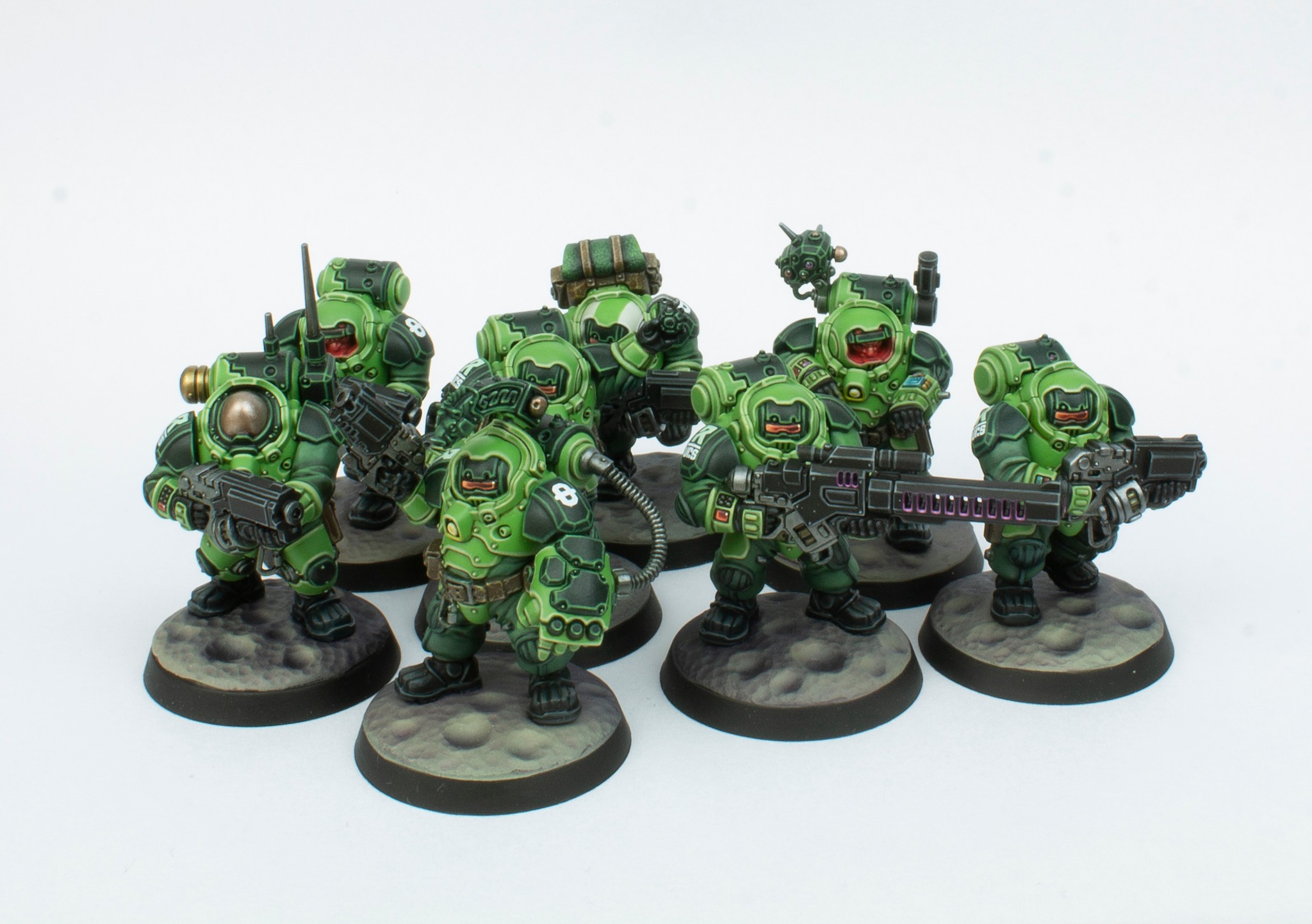
Above are some examples of Matteo practicing GW style, combined with a vibrant palette. Over the years he obtained results comparable to the ‘Eavy Metal paintjobs.
3) Speaking about painting style, are there some specific painters from whom you drew inspiration?
It’s always very hard to answer this question, because i’d feel unfair to all the great artists I won’t be able to name.
When it comes to personal tastes, I can say the most impressive painter is Kirill Kanaev: he’s got such understanding and mastery of painting techniques that, in my opinion, he transcends what is the current state of this art.
Maybe he’s less emblazoned, but I also appreciate Josua Lai because of his original and distinctive approach to the hobby. His dioramas are gorgeous both in terms of execution, both because of the choice of original ideas and subjects:
in a field dominated by the themes of war, monsters and fighting, his depiction of animals and his use of pastel tones are a never-ending source of inspiration.
Finally, if i’d be to name the painter who inspires me the most, and that I feel closest to my ideal of painting, i’d certainly say Albert Moreto Font.
Like me, he uses a clean and fairytale-like painting style, and I love the meticulousness he applies to enhance every detail of his projects.
4) Anything in particular that you like/don’t like to paint? (except elves, of course!) Scale, setting, specific areas of a model etc
Generally speaking I don’t like to paint furs and textures that are too realistic, because they don’t match perfectly with my style. I prefer less realistic and more stylized sculpts, precisely because they help a “cartoonish” paintstyle, as mine is often described.
On top of that, i’d say wings as well: for the way I paint them, wings are an endless marathon and they make me lose the will to paint!
Over time I learnt – if not to appreciate them – to understand elves’ potential: after all, who better than them is suitable for a clean, precise painting style? (but please, don’t let anyone know about this!)
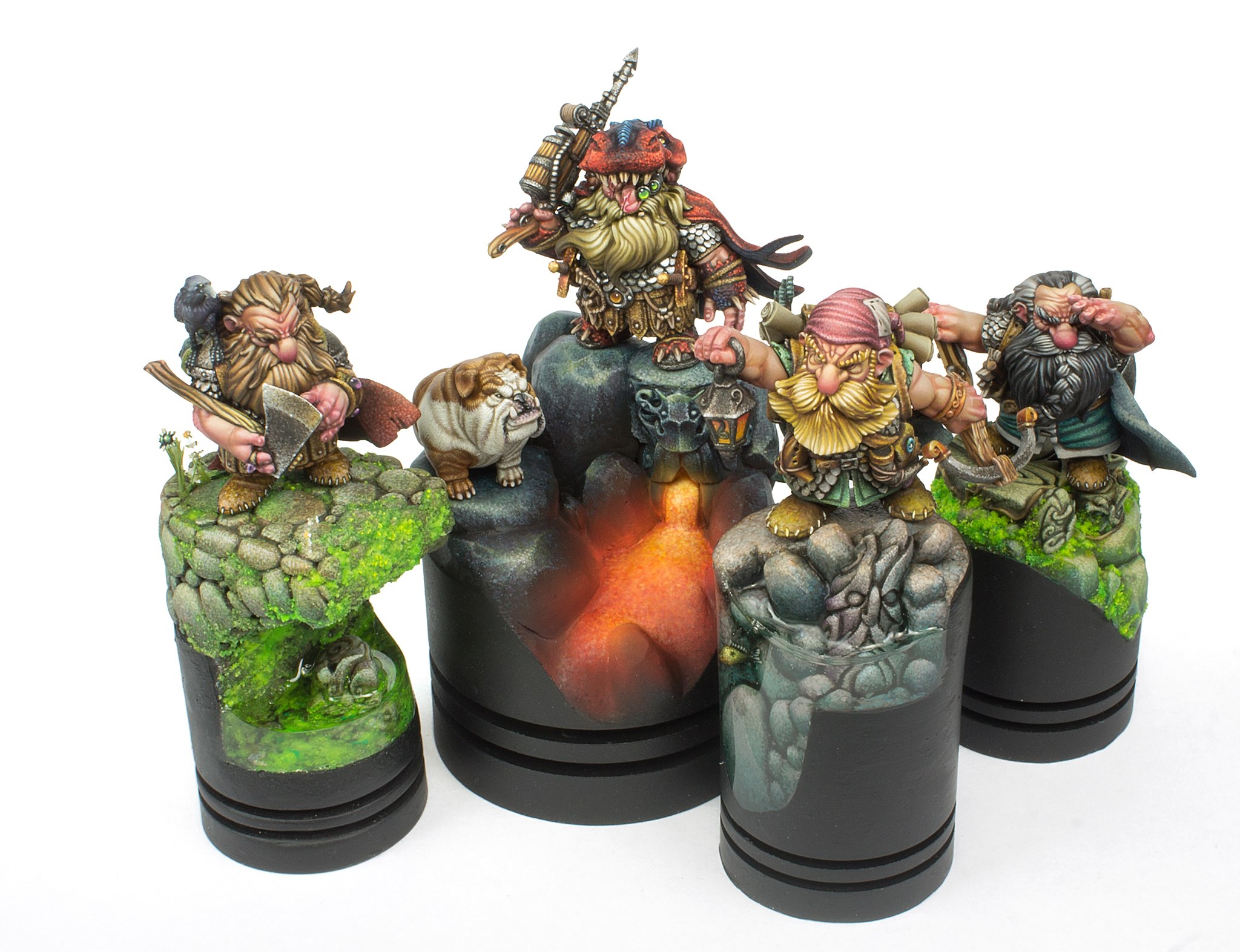
Some Iron Crows dwarves, painted by Matteo. A good example of slightly “cartoonish” sculpts that still pack a lot of details and come with many surfaces where the painter can experiment. They were part of a past Kickstarter.
5) The miniature painting community rapidly evolved during the last years. Nowadays we have Patreon, youtube channels, dedicated groups and websites and access to high quality 3d printing.
What are your thoughts about this matter, and how do you envision the community’s evolution?
I’m impressed by the way our field evolved during the past ten years, and I must say it’s both comforting and inspiring. There’s no point in kidding ourselves, our hobby always has been a niche inside a niche, and maybe still today we’re considered “nerds among nerds” in a world where – luckily – reading comics and playing role-playing games is not anymore something for “losers”.
In this sense, I hope our hobby will be able to expand its boundaries even more, since I believe it’s an inspiring and captivating activity in a world where, especially if we consider the newest generations, the habit is having fun by scrolling through Tik-Tok videos.
International communities revolving around gaming and modelling are getting bigger and full of passionate people, and this can only be good for the hobby’s future.
Patreon it’s a bit of a sore point, because it’s been some years since i’ve been wanting to start my own – following the advice of a Youtuber friend of mine – when it wasn’t very popular in our field. Unfortunately I didn’t believe enough in the project, or it would be better to say that i’ve always found it difficult to film myself while painting, and at the time (I believe it was circa 2015) it wasn’t easy to find suitable cameras without breaking the bank.
I’m a perfectionist, which is a big limit, and so when I realized how I couldn’t create a “perfect” product I simply decided to give up. With hindsight, maybe I wouldn’t be rich now but surely it would have been a good opportunity, professionally and economically.
The idea to start my own Patreon still lingers in my head, but i’m trying to figure out what I could offer to the community that hasn’t already been explored by other, better artists.
I’m aware it will sound trivial, however I think 3d printing can really be the future – despite having its negative sides.
For a modeller, opportunities offered by 3d printing are nothing short of revolutionary but unfortunately, for those like me who work producing miniatures, it also involves piracy and that’s a thorn in one’s side.
For how much frustrating it can be to see your own products counterfeited, or your STL exchanged illegally,i must say i’m still extremely positive and enthusiastic about it; I believe we manufacturers just need to adapt and find the better way to ride this technological revolution instead of focusing on what it can take away from us.
6) Many people know you as “Durgin Paint Forge” – the website hosting your wonderful lines of miniatures and the many successful Kickstarters revolving around the races of Inneath. Can you tell us how the project started, and how do you plan to develop it?
Everything I did up until today has a single purpose and direction: the creation of a boardgame.
These first years has been important in order to gather experience in the field and start a professional and creative journey leading to something more ambitious.
I literally started from scratch, I mean that at the beginning I was broke and I had to sell my motorbike in order to finance my first sculptures!
It’s been a path at the same time rewarding as well as frustrating, or demoralizing, because the moderate success (let’s say “appreciation”) my models obtained during these years makes me very proud; at the same time, my motivation has been put to the test many times from having to continuously fight against a limited budget and paying a high price for the unavoidable errors you make when learning a new job.
I think, however, that i’m swiftly moving ahead on this path: I produced more than 130 kits, new ones are going to join coming October (Orks!) and I’m starting to glimpse on the horizon the chance to finally work on the first starter set of the boardgame, which is planned for 2025.
Hence, we’re almost there!
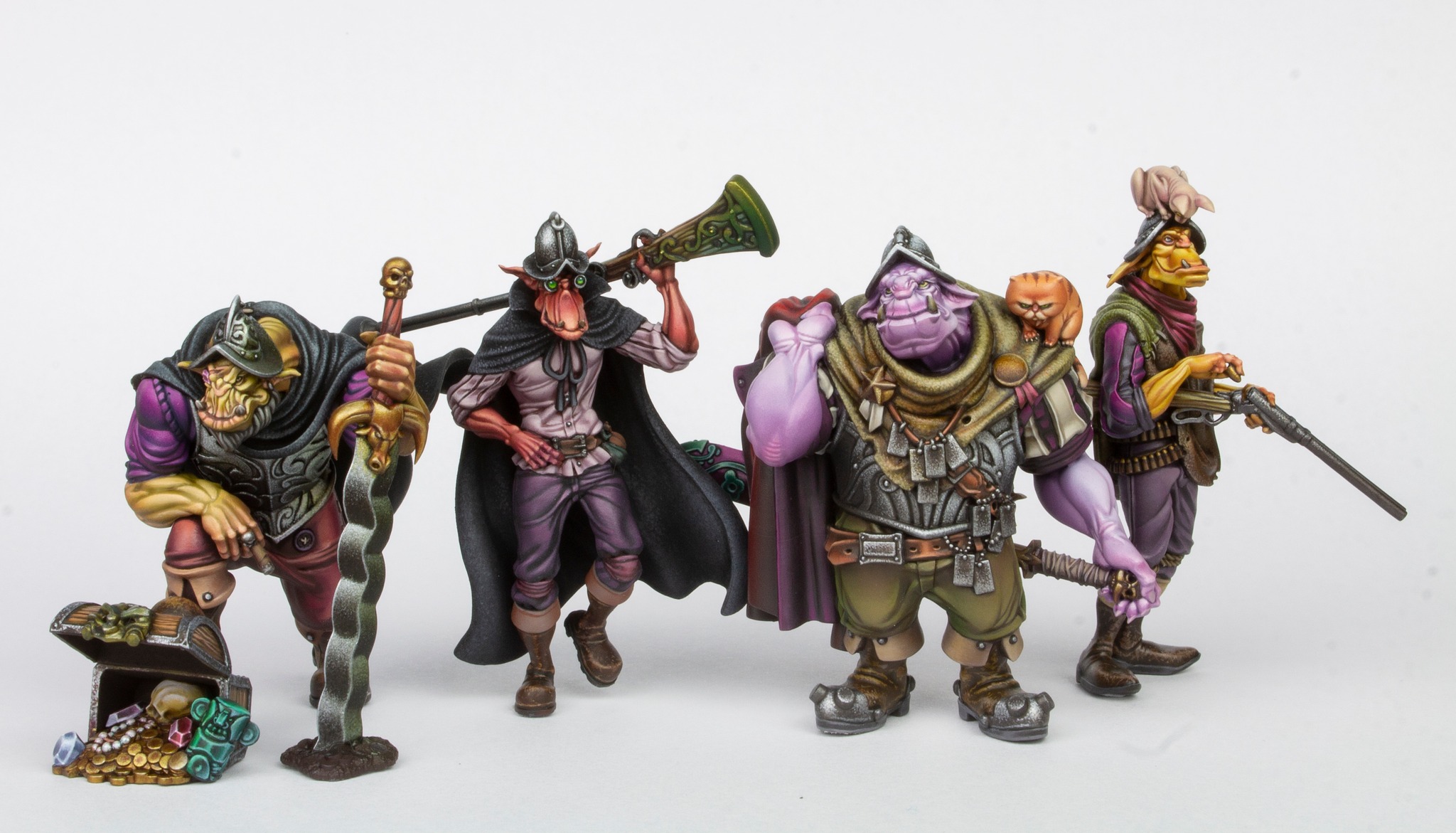
“Orcs of Inneath” is Durgin Paint Forge’s new KS, coming October 24th, 2023. Above some painted models of the range: clearly, Matteo favorite colour is purple (once he told me how he tries to add a bit of it in every paintjob). Oh and did you notice those cute cats interacting with the orcs?
7) A peculiarity of your creations is the somehow joyful mood. Even when looking at the fiercest models you have in store, I receive peaceful, pleasant sensations.
I was wondering if there’s some specific message or story you want to convey with your miniatures.
I’m happy that this slightly different approach is noticeable!
I like to include elements from daily life even when I deal with the typical subjects of epic fantasy.
It’s both a way to amaze potential customers as well as to create something recognizable, but it’s also intended to create multifaceted characters.
I always try to add small details, or a “human-like” attitude, because I like to think that it’s possible that an emotional bond can arise between the character and the hobbyist… and that one could imagine them non only when battle rages, but also during everyday’s life!
I noticed how people are very curious towards this kind of subjects and, from a creative point of view, I find interesting to mix classical themes of epic fantasy (such as war, epic feats, monsters and bad guys) with behaviours belonging to daily life.
I think it allows the viewer to develop a better comprehension of the fictional world these characters come to life in.
The fantasy universe i’m creating – Inneath – has its own definite mood and I want it to be immediately recognizable: a world made of adventures, battles and dangers, but also full of light-heartedness and “normality”.
By including these elements into the sculpts I try to make more believable characters, while also providing the hobbyist additional details with whom imagine their story and the world they live in.
8) Something a bit more personal. You recently had a wonderful child, how does it feel to become a father?
Did it change your approach to miniature painting and creation somehow?
Maybe i’ll sound extremely trite, but Medea is something far beyond anything I imagined before she was born.
To say she revolutionized my life is understatement – as every parent perfectly knows – and above all else the first year has been very hard, albeit rewarding.
Medea came to life with a particular condition, technically called “partial agenesis of the corpus callosum”: basically, right after her birth the doctors informed us about a rare genetic malformation in her brain, a delicate and unpredictable condition that could have slowed or hinder her normal psychophysical development… or be totally asymptomatic!
In order not to miss anything, they also found a benign tumor in her brain – most probably what led to the malformation.
We spent the first eight months in and out from hospitals, constantly monitoring her development along with the doctors.
It was quite the burden for us, we were like: Will she grow up like everyone else? Will she be normal? Will she walk, speak?
It’s been difficult focusing on my job and finding time to carry on my projects, because obviously my mind was elsewhere.
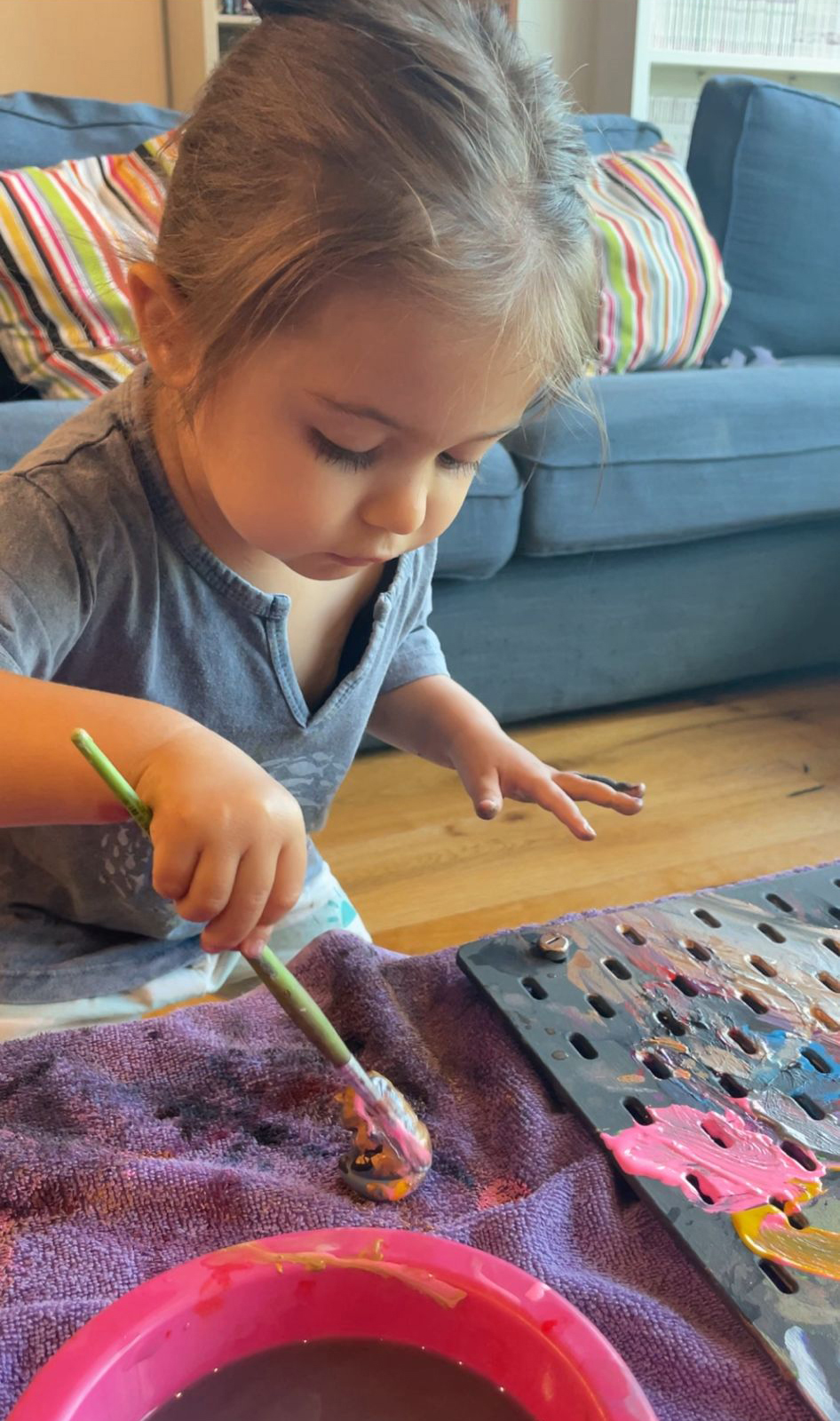
Furthermore we live far away from our parents, so my wife had to take a break from work in order to fully focus on Medea, and this basically made impossible to find time to record some painting videos (the one filming and editing all my tutorials is my wife!).
It’s been frustrating, daunting, but luckily enough it’s been two years since Medea’s birth and we are way more relaxed because the little girl is growing well and honestly, in many ways she’s far ahead of her “colleagues”. So, it seems her clinical condition is asymptomatic – a huge relief.
Obviously we’ll need to continuously monitor the tumor but, compared to the doctors’ ominous predictions, we’re truly living a miracle.
From the creative side I must say I never had so much fun. Medea is very curious when she sees me painting, and she already painted her first miniature.
At the moment i’m working on a set of cats, planned to go along with the Orks’ range, and she’s enthusiatic about it.
From now on, i think i’ll need to create way more animals!
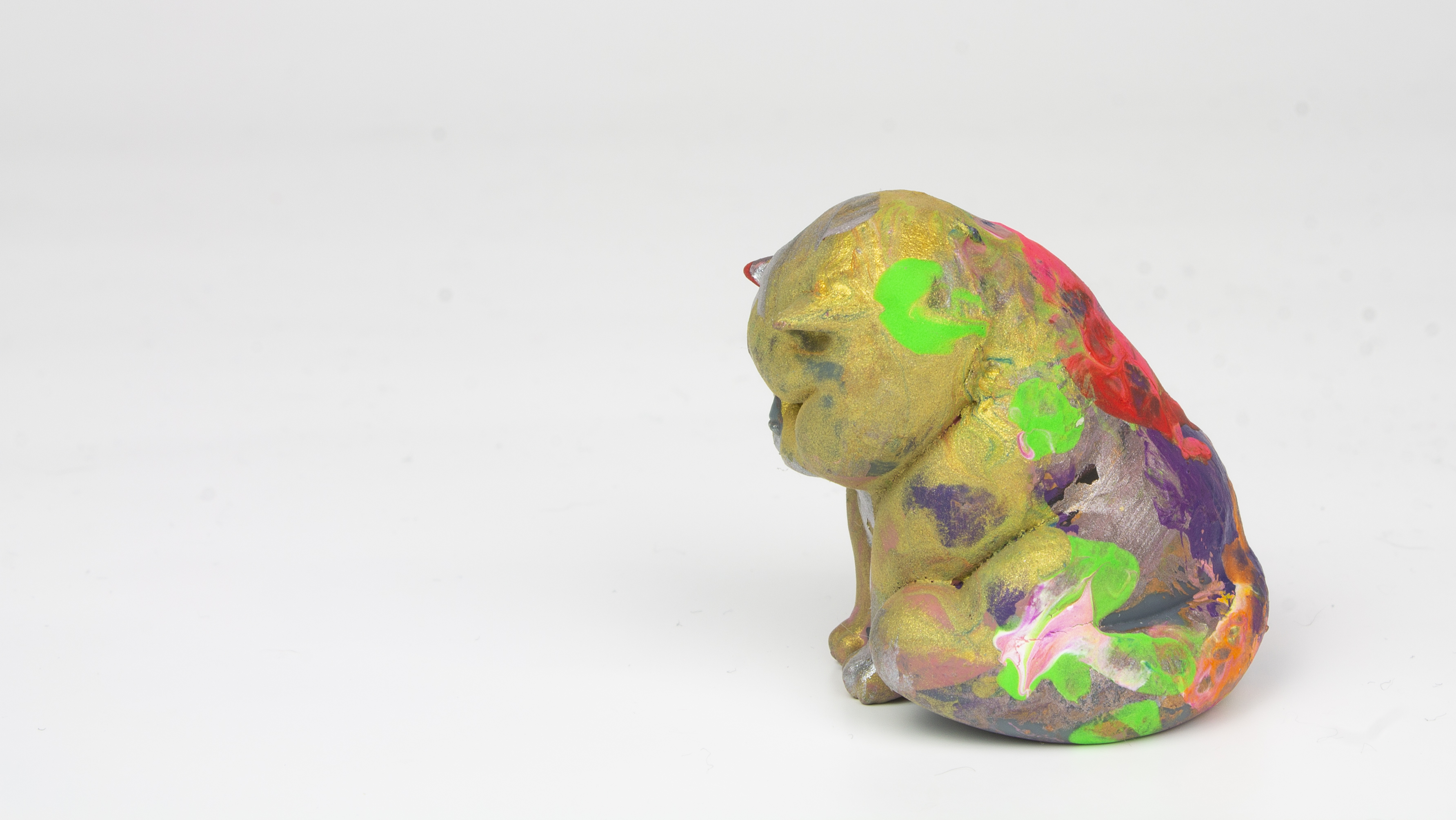
Top image: young Medea painting her version of the cat Alberto.
Above image: the completed paintjob. That green is rad!
Alberto is part of a contest running until October 28th, 2023
9) If you could rub the genie lamp and make one and only wish regarding the world of miniatures, what would it be?
Allow me a bit of healthy selfishness: i’d wish for Games Workshop to task me with the creation of a new range of Dwarves, without budget limitations.
Or at least, that it would give me the money needed to create it myself.
Too venal?
10) What does painting miniatures mean for you?
When I started painting, it was a way to give life to something living only in my imagination.
As a teenager I went through a rough time, I was living at my grandparents’ place and I witnessed the course of my grandfather’s illness, which at the time was suffering from cancer.
During that period, miniatures represented a world where I could have control over the situation, disconnect from negative thoughts, and take refuge to avoid sinking into anguish.
When I decided to quit studying law, miniatures literally became my future.
I was terrified because it’s hard to explain to yourself and to your parents,: “Mom, Dad, I’m not going to university anymore because I want to create my miniature world.”. But I was fortunate to find a lot of support around me.
Painting is a challenge with myself and also a way to communicate with others. I loved forums because through painting projects, discussions and debates were created with many passionate people.
I dislike that nowadays everything is resolved with a competition to see who gets more likes.
So, if I were to summarize what miniature painting means to me, I would say that it’s perhaps the most effective medium I’ve found throughout the arc of my life to express my creativity, feel proud of something I have learnt to do, and use my skills to be appreciated by others.
It is comforting.
Thanks to Matteo for the time invested in this interview.
When we were exchanging mails and discussing the questions, he was like “i hope my answers won’t be too banal” but personally i think they are quite exhaustive, detailed, and even emotional.
I want to close this post by leaving below the picture of a Dwarf sculpted by Valerio Terranova and painted by Matteo – possibly, this model could be the start of his project: he posted it on the previously mentioned GwTilea Forum something like ten years ago, explaining how it was digitally sculpted and printed, and when i saw it, I immediately understood how our community was about to see a massive change. Nowadays 3d sculpting has made leaps and bounds and i’m confident our hobby will experience even faster progresses in the future.
(PS. I still have my copy of that dwarf… unpainted, shame on me.)
Thanks for reading this far, and until next time!
Lorenzo

